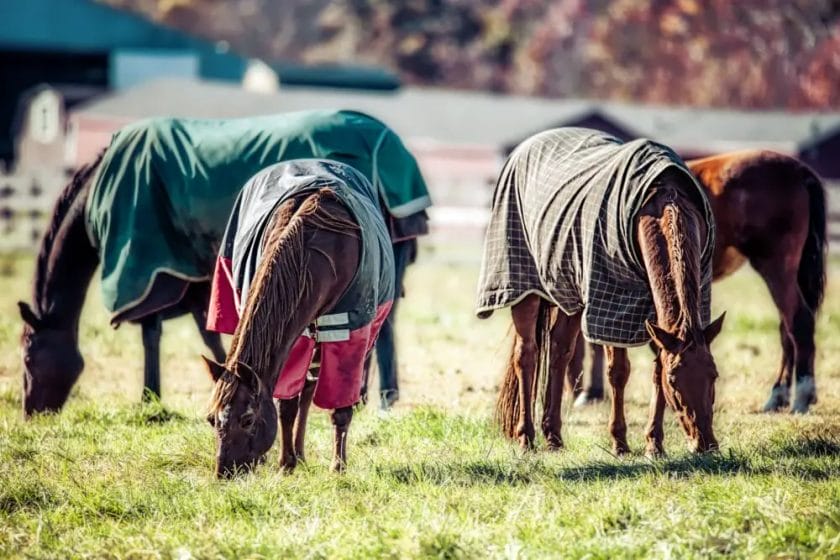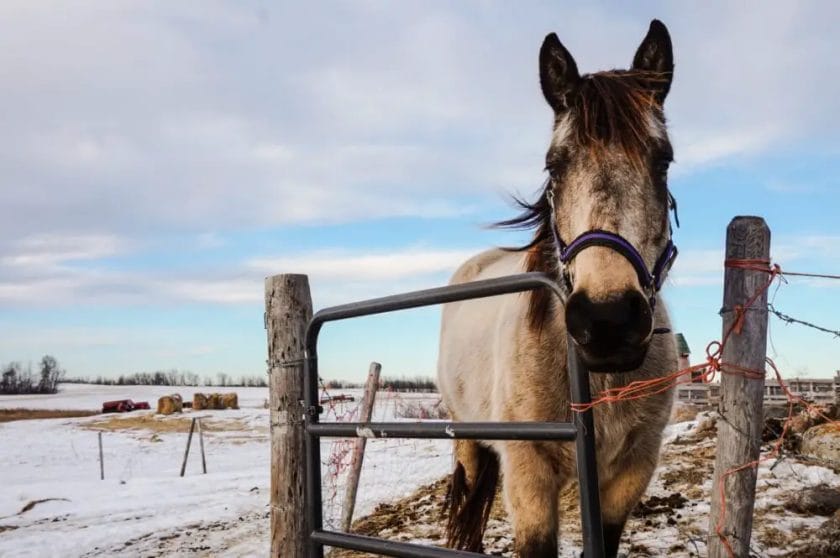When it comes to keeping your horse blankets clean and fresh, a proper cleaning routine is essential. Regularly cleaning your horse blankets not only helps to maintain their durability and lifespan but also ensures the comfort and hygiene of your equine friend. In this guide, we will provide you with step-by-step instructions on how to effectively clean your horse blankets, removing dirt, stains, and odors. From prepping the blankets to selecting the right cleaning products, we’ve got you covered. Keep reading to discover the best practices for cleaning horse blankets.

Choosing the Right Cleaning Method for Horse Blankets
Keeping your horse blankets clean is essential for maintaining their durability and ensuring the comfort of your horse. However, with various types of horse blankets available in the market, it can be challenging to determine the most suitable cleaning method for each type. In this section, we will guide you through the process of choosing the right cleaning method for your horse blankets to ensure they stay in excellent condition.
1. Identify the Material
The first step in determining the appropriate cleaning method for your horse blanket is to identify the material it is made from. Horse blankets can be made from different fabrics such as polyester, nylon, wool, or a combination of these materials.
If your horse blanket is made of polyester or nylon, it can usually be machine washed. However, it is essential to check the manufacturer’s instructions to ensure that machine washing is suitable for your specific blanket. Some blankets may require hand washing or professional cleaning.
On the other hand, if your horse blanket is made of wool, machine washing is not recommended as it can cause shrinkage and damage to the fabric. Wool blankets typically need to be hand washed or dry cleaned to maintain their integrity.
2. Check for Special Instructions
Once you have identified the material of your horse blanket, it is crucial to check for any special cleaning instructions provided by the manufacturer. Some blankets may have specific recommendations for cleaning products or temperature settings. Following these instructions will help you avoid any damage to the blanket and ensure effective cleaning.
3. Assess the Level of Soiling
The level of soiling on your horse blanket will also play a role in determining the most suitable cleaning method. If the blanket only has light dust or dirt, spot cleaning may be sufficient. This can be done by using a gentle detergent or stain remover on the affected areas.
For heavily soiled blankets, especially those used during muddy or rainy conditions, a thorough wash may be necessary. In such cases, machine washing or professional cleaning may be the best options to ensure a deep and effective clean.
4. Consider Waterproofing Treatments
If your horse blanket is designed to be waterproof or water-resistant, it is essential to consider the impact of cleaning on this feature. Some cleaning methods or detergents can strip away the waterproofing properties of the blanket, reducing its effectiveness in protecting your horse from moisture.
When cleaning waterproof or water-resistant blankets, it is recommended to use a specialized cleaner designed for these types of fabrics. This will help maintain the waterproofing properties while effectively cleaning the blanket.
5. Follow Proper Cleaning Techniques
Regardless of the cleaning method you choose, it is important to follow proper cleaning techniques to ensure optimal results. Here are some general guidelines:
- Remove any loose dirt or debris from the blanket before cleaning.
- If machine washing, use a gentle cycle and cold water to prevent damage.
- Avoid using harsh detergents or bleach, as they can weaken the fabric.
- Hang the blanket to air dry, unless specific instructions recommend otherwise.
- Store the cleaned and dried blanket in a clean, dry place to prevent mold or mildew growth.
By following these guidelines and considering the material, special instructions, level of soiling, waterproofing treatments, and proper cleaning techniques, you can ensure that your horse blankets are cleaned effectively and maintain their quality for a long time.

Tips for Hand Washing Horse Blankets
Keeping your horse’s blankets clean is essential for their comfort and well-being. While machine washing can be convenient, hand washing is often recommended for horse blankets to avoid any potential damage. In this section, we will provide you with some valuable tips for effectively hand washing your horse blankets.
1. Prepare the Washing Area
Before you begin washing the horse blankets, it’s essential to set up a suitable area for the task. Find a clean and spacious location where you can comfortably work. Lay down a tarp or a waterproof sheet to protect the surface underneath from getting wet and soapy. Ensure that you have easy access to water and all the necessary supplies, such as a mild detergent specifically formulated for horse blankets.
2. Remove Excess Dirt and Debris
Prior to washing, remove any excess dirt, mud, or debris from the blankets. Use a stiff brush or a soft bristle broom to gently scrub the blanket, paying close attention to heavily soiled areas. This step will help prevent clogging your washing machine or causing unnecessary wear and tear.
3. Spot Treat Stains
If you notice any stubborn stains on the horse blankets, it’s a good idea to spot treat them before washing. Apply a small amount of stain remover or a mixture of gentle detergent and water directly to the stained area. Gently scrub the stain with a soft brush or cloth, and then rinse it thoroughly. This will help ensure that your horse blankets come out clean and fresh after washing.
4. Fill a Large Basin or Bathtub
Fill a large basin or bathtub with lukewarm water. Add the recommended amount of horse blanket detergent to the water and mix it well until it forms a gentle soapy solution. It’s important to use a detergent specifically formulated for horse blankets, as regular laundry detergents can be too harsh and damage the fabric.
5. Soak and Agitate the Blankets
Place the horse blankets into the soapy water and gently agitate them with your hands to ensure thorough cleaning. Allow the blankets to soak for about 20-30 minutes, occasionally stirring them to dislodge any dirt or grime. Avoid excessive scrubbing or wringing, as it can cause damage to the fabric or alter the blanket’s shape.
6. Rinse and Squeeze Out Excess Water
After the blankets have soaked, drain the soapy water and rinse them thoroughly with clean water until no soap residue remains. Squeeze out the excess water from the blankets gently by hand. Repeat the rinsing process if necessary, ensuring that all the detergent is completely removed.
7. Air Dry the Blankets
Hang the horse blankets to air dry in a well-ventilated area. Avoid direct sunlight, as it may fade the colors or cause the fabric to become brittle. Ensure that the blankets are completely dry before storing them to prevent mildew or mold growth. It may take a few hours or even a day for the blankets to dry fully depending on the weather conditions.
In summary, hand washing your horse blankets is a necessary step in maintaining their cleanliness and longevity. By following these tips, you can ensure that your horse blankets stay in good condition and provide optimal comfort to your equine companion.

Machine Washing Horse Blankets: Dos and Don’ts
When it comes to keeping your horse comfortable and protected, a clean and well-maintained horse blanket is essential. Regular cleaning not only ensures the longevity of the blanket but also helps keep your horse healthy. While hand washing can be a time-consuming task, machine washing is a convenient option. However, it’s important to follow the dos and don’ts of machine washing horse blankets to avoid damaging the fabric or compromising its effectiveness.
Do: Check the Label
Before tossing your horse blanket into the washing machine, carefully read the label for any specific instructions or recommendations. Manufacturers often provide guidelines regarding water temperature, detergent type, and other relevant information. Following these instructions will ensure that you clean the blanket effectively without causing any harm.
Do: Remove Excess Dirt and Debris
Prior to machine washing, it’s essential to remove any excess dirt, debris, or loose hair. Use a soft brush or a vacuum cleaner to gently remove these particles. This step helps prevent clogging your washing machine and ensures a more thorough clean.
Do: Secure All Straps and Fastenings
Make sure to fasten all straps, buckles, and closures on the blanket before placing it in the washing machine. This prevents them from getting tangled or damaged during the wash cycle. Additionally, it’s advisable to place the blanket inside a mesh laundry bag or pillowcase for added protection.
Do: Use a Gentle Cycle and Mild Detergent
When selecting the washing cycle, opt for a gentle or delicate setting to avoid excessive agitation that can cause the fabric to tear or fray. Use a mild detergent specifically formulated for washing horse blankets or a gentle laundry detergent. Avoid using harsh chemicals or fabric softeners as they can damage the blanket’s waterproofing abilities.
Don’t: Overload the Washing Machine
While it may be tempting to wash multiple horse blankets at once, overloading the washing machine can lead to inadequate cleaning and potential damage. It’s important to give the blanket enough space to move freely during the wash cycle for a thorough cleaning.
Don’t: Use Hot Water
Using hot water can cause shrinkage, fading, and damage to the fabric of the horse blanket. Stick to cold or lukewarm water to preserve the integrity and quality of the blanket.
Don’t: Use High-Speed Spins
Avoid using high-speed spin cycles when machine washing horse blankets. The forceful spinning can put excessive strain on the blanket, leading to stretching, tearing, or dislodging of straps and fastenings. Opt for a gentle spin or manually remove excess water by squeezing the blanket gently.
Don’t: Tumble Dry on High Heat
Avoid tumble drying horse blankets on high heat as it can cause damage to the fabric and compromise its waterproof properties. Instead, air dry the blanket by laying it flat or hanging it up in a well-ventilated area. Make sure the blanket is completely dry before storing it to prevent mold or mildew growth.
Summary
Machine washing horse blankets can be a convenient way to keep them clean and well-maintained. By following the dos and don’ts mentioned above, you can ensure that your horse blanket stays in optimal condition, providing your horse with the comfort and protection they need.
Proper Drying and Storage Techniques for Horse Blankets
As a horse owner, it is essential to properly care for your horse’s blankets to ensure their longevity and effectiveness. After a long winter season or a particularly wet ride, it’s important to follow proper drying and storage techniques to keep your horse blankets clean, dry, and ready for the next use. In this section, we will discuss the steps you should take to effectively dry and store your horse blankets.
1. Drying Horse Blankets
The first step in maintaining your horse blankets is to thoroughly dry them after each use. This helps prevent mold, mildew, and bacteria growth, which can deteriorate the fabric and cause skin irritations for your horse. Follow these steps to ensure proper drying:
- Remove excess moisture: Before hanging the blanket to dry, remove any excess moisture by shaking it out or using a towel to absorb any wet spots.
- Hang in a well-ventilated area: Find a well-ventilated area, such as a drying room or a dry, shady spot outdoors. Avoid direct sunlight, as it can fade the colors and weaken the fabric.
- Avoid using heat sources: Do not use direct heat sources like a heater or dryer, as this can damage the fabric. Instead, allow the blanket to air dry naturally.
- Check regularly: Check the blanket periodically to ensure it is drying evenly. Gently flip it over to promote even airflow.
- Allow sufficient time: Depending on the weather conditions and the thickness of the blanket, drying may take anywhere from a few hours to a couple of days. Be patient and allow enough time for it to completely dry.
2. Cleaning before Storage
Before storing your horse blankets, it is important to clean them properly. Any dirt, sweat, or debris left on the blankets can attract pests and cause damage over time. Follow these steps to effectively clean your blankets:
- Check the care instructions: Read the manufacturer’s instructions on how to clean the specific type of blanket you have. Some blankets may require specific cleaning methods.
- Remove excess dirt: Use a soft brush or cloth to remove any loose dirt or debris from the blanket.
- Spot clean: If there are any stubborn stains or soiled areas, spot clean them using a mild detergent or a specialized blanket cleaner. Follow the manufacturer’s guidelines.
- Machine wash or hand wash: Depending on the type of blanket, you may be able to machine wash it or hand wash it. Ensure you use a gentle cycle and cold water. Avoid using harsh detergents or bleach.
- Rinse thoroughly: After washing, make sure to rinse the blanket thoroughly to remove any soap residue.
- Air dry: Similar to the drying process mentioned earlier, air dry the blanket in a well-ventilated area, avoiding direct heat sources.
3. Proper Storage
Once your horse blankets are clean and dry, it’s time to store them properly to prevent any damage and keep them in good condition. Follow these steps for proper storage:
- Ensure complete dryness: Make sure the blankets are completely dry before storing them. Any moisture left can lead to mold and mildew growth.
- Fold neatly: Fold the blankets neatly to avoid any creases or wrinkles that can weaken the fabric over time. This also saves space in your storage area.
- Use storage bags or totes: Place the folded blankets in clean, breathable storage bags or totes. Avoid using plastic bags, as they can trap moisture and lead to mold growth.
- Avoid storage in basements or attics: Choose a storage area that is dry, cool, and well-ventilated. Basements and attics are prone to high humidity levels, which can damage the blankets.
- Keep away from pests: To prevent pests from nesting in the blankets, consider using mothballs, cedar chips, or other natural deterrents. Ensure they are stored securely to avoid contact with the blankets.
- Check periodically: Regularly inspect your stored blankets for any signs of damage or pests. This allows for early detection and necessary action to prevent further harm.
In summary, proper drying and storage techniques are crucial for maintaining the quality and longevity of your horse blankets. By following these steps, you can ensure that your blankets remain clean, dry, and ready
FAQs
1. How do I clean horse blankets?
To clean horse blankets, start by removing excess dirt and debris. Then, place the blanket in a washing machine with a mild detergent. Use a gentle cycle and cold water. Avoid using bleach or fabric softener. After washing, hang the blanket to air dry completely before storing or using it again.
2. Can horse blankets be machine washed?
Yes, most horse blankets can be machine washed. However, it’s important to check the manufacturer’s instructions to ensure that the specific blanket can be machine washed. Using the correct detergent and washing on a gentle cycle with cold water will help prevent any damage to the blanket.
3. How often should I clean horse blankets?
The frequency of cleaning horse blankets depends on the level of dirt and usage. In general, it is recommended to clean horse blankets at least once a season or when they become visibly dirty. Regular cleaning helps maintain the blanket’s quality and keeps it free from dirt, sweat, and odors.
Conclusion
In conclusion, knowing how to clean horse blankets is essential for maintaining the cleanliness and longevity of your horse’s gear. By following the proper cleaning techniques and using gentle detergents, you can effectively remove dirt, sweat, and bacteria from the blankets. Regular cleaning not only keeps your horse comfortable and healthy but also extends the lifespan of the blankets. Additionally, it is crucial to allow the blankets to thoroughly dry before storing them to prevent mildew or mold growth. Remember, a clean and well-maintained horse blanket is crucial for the overall well-being and comfort of your equine companion.
